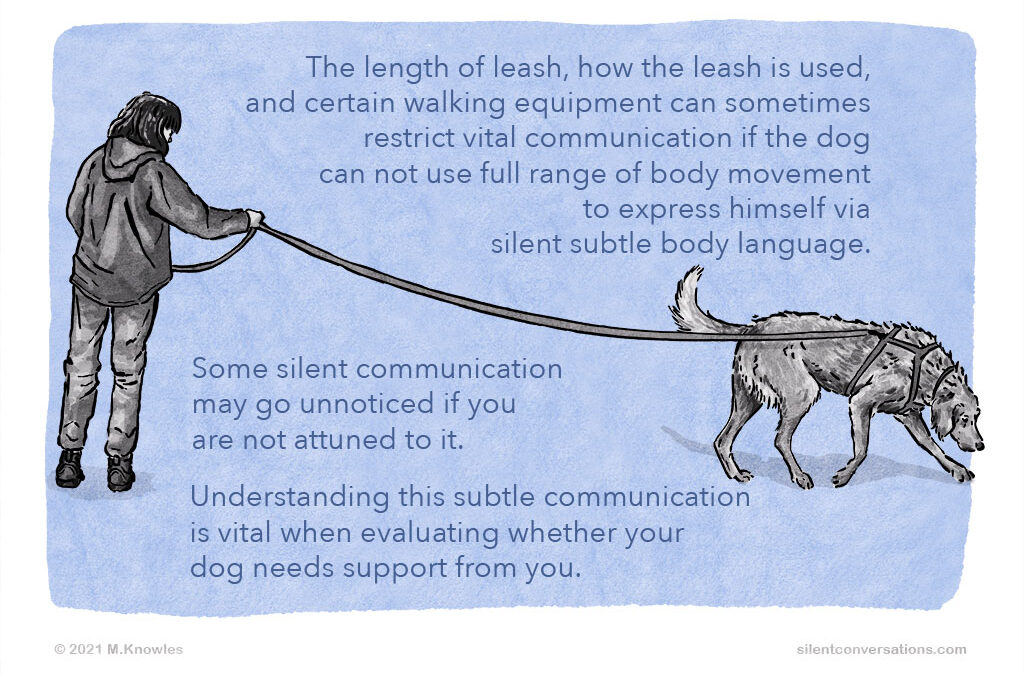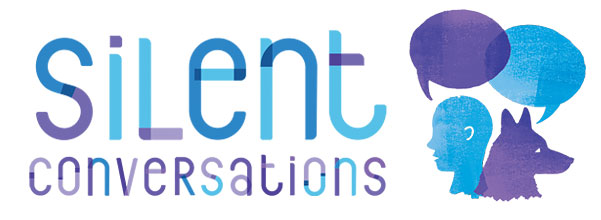
Reasons for walking your dog on a longer leash
Reasons for walking your dog on a longer leash
The reason for a longer leash is to allow the dog to express his natural behaviour and communication. The dog is able to interact with the environment by moving authentically. Dogs use their bodies to communicate. The dog should be able to express natural behaviour when on leash, such as investigating, sniffing, marking, and making choices. Scent is one of the dog’s predominant senses; it is important for the dog to be able to navigate and interpret the environment through scent. Choice is essential for the dog; it is key for confidence building, learning and mental well-being.
There is complexity to long leash handling on both ends of the leash. Before considering leash handling, the dog’s stress levels and skill set are important factors to bear in mind. The dog guardian should choose a suitable environment that will be appropriate for the dog’s skill set. If the dog is allowed to make choices at a level they can manage, and the choice has a positive outcome for the dog, this provides valuable intrinsic learning, encouraging the dog to think for himself and problem solve.
From the dog guardian’s side of the leash, a longer leash provides the dog space to communicate and affords the dog guardian the opportunity to observe the dog – an opportunity lost if the dog is performing trained behaviours. Dogs have a space bubble when on leash; at times humans can interfere with the dog’s natural body language and also be unaware they are inadvertently pushing the dog into situations they might not be comfortable with. The handler/dog guardian can also block the dog’s option of avoiding the situation or choosing an escape route. This is why the guardian’s body language, position and space usage play a role in leash handling. At times it may also be appropriate for the guardian to move up the leash to shorten it and provide support in situations where the dog may need it.
This does not even begin to address actual leash handling techniques like how to loop up the leash, how to shorten the leash, how to stop gently, leash handling in tricky situations, and so on. If you are not aware of correct long leash handling mechanics, this can lead to injuries. You should always have both hands on the leash, which is continuously being readjusted by your guiding hand, as it slides down the leash and loops it up in your looping hand, then lets the leash slide through your guiding hand to release it at moments where it is safe to do so. Not to mention that the long leash should always be ‘smiling’ – not dragging on the ground – no matter how extended it is. (Visit the Smiling Leash Project @smilingleash).
Analysis of environment, and how to navigate and use it to the dog’s advantage, is an important consideration. All that has been discussed so far indicates how extensive and nuanced long leash handling can be. Many of these leash handling techniques will seem effortless and invisible to an untrained eye. It takes time on both ends of the leash to learn and find comfort. I certainly am still learning something new with every occasion I get to practice long leash handling.
I was very fortunate to have stumbled upon Turid Rugaas’ book, “On Talking Terms with dogs: Calming Signals”, at the right moment in time. Seeking to see Turid in person, I went to a Dog Reactivity seminar by her. Sheila Harper was hosting the seminar in the UK; this was round about 2011. In the process, I became familiar with Sheila and attended a few of her shorter courses. The level of observation in these courses convinced me to complete further comprehensive study with Sheila Harper. I immediately felt at home with the principles of Sheila’s courses, in which the dog’s perspective was valued when facilitating the learning process, and dogs could express their natural behaviours and communication, enabling them to make choices and have a say in outcomes. The priority was building the life skills of the dog, rather than performed behaviours.
I learnt long leash handling from Sheila, the shortest leash being about 3m*, with the dog wearing a comfortable Y-shaped harness (* 3m/9ft is good for a novice handler, while 5m/16ft or longer is good for someone who has started to hone their long leash handling skills). Sheila has been teaching long leash practical theory since approximately 1990s. This practice of long leash handling is not for special occasions it is for day to day use on all walks with the walks being chosen from the dogs point of view and skill set.
If you are new to long leash handling or would like to start learning more about it, I would encourage you to seek coaching. My recommendation would be learning from Sheila Harper, as I have had the most personal experience of Sheila’s coursework and can attest to the quality of her teaching. Sheila is also one of the founding organizational committee members of The International Companion Animal Network (@ICANwelfarefirst).
Turid Rugaas has taught long leash handling and advocated for longer leashes for a long time; she has just recently celebrated a 50-year anniversary of working with dogs. Turid is a founding member of the Pet Dog Trainers of Europe (PDTE) and most of her practicing students can be found via the PDTE website. The Smiling Leash members have all studied with Turid Rugaas.
Grisha Stewart’s recent BAT 2.0 leash handling seems to share some simularities with the principles of Turid’s leash handling with regards to long leashes, some of the long leash handling techniques, and the use of social walks (or “BAT set ups” as Grisha has called them). However, it is not completely the same, as BAT does mix in a few elements of classical training to it along with offering long leash handling techniques.
All three teachers/trainers may offer slightly different nuances when teaching long leash handling. I feel most comfortable recommending Sheila’s courses due to my personal experience as I have completed substantial study with Sheila, and have not completed any longer courses with Turid or Grisha, apart from shorter seminars. So I am unable to compare the differences entirely and may not be aware of some of the nuances of what is taught along with long leash handling, between the three.
Both Turid Rugaas and Sheila Harper students use social walks frequently when working on dogs’ confidence and social skills. Social walks can also be used to the benefit of reactive dogs. The name ‘Social walk’ can be a deceptive title, as some of the walks are not that “social”, depending on the dog and begin at great distances over multiple sessions. How to set up social walks is an extensive subject in of itself and has many variables, depending on the needs of individual dogs. The social walks are on harness and long leash, allowing the dog to communicate and make appropriate choices within a suitable environment and appropriate setup.
I hope I have managed to convey that long leash handling is a topic with extensive depth to it. It is not about picking up a long leash and a little bit of leash technique, there is far more to consider; both from the individual dogs needs and consideration from the dog guardians with regards to planning, observation and support offered to the dog.

Martha Knowles
Author
My vision is to create a community of dog guardians who share their observations and interpretations of their dogs’ silent conversations. Hopefully, these experiences and stories will provide some insight into dog communication, which is often overlooked by the untrained eye because it is unfamiliar to humans. We are accustomed to communicating mainly with sound, so we are not attuned to the silent subtle gestures and body language used by dogs to communicate. If you take the time to observe, you will start to see these 'silent conversations' going on around you. My dream is for dog communication to become common knowledge with all dog guardians and as many people as possible. Surprisingly, there are still some professionals working in various dog-related careers who are uneducated about dog body language. Greater awareness of how dogs communicate will help to provide better understanding and improve the mutual relationship between dogs and humans. This will promote safer interactions between our two species and hopefully remove some of the expectations placed on dogs within human society. I would like dog guardians to feel empowered with their knowledge of dog communication so that they can be their dogs’ advocates and stand up for themselves and their dogs when it really matters.
